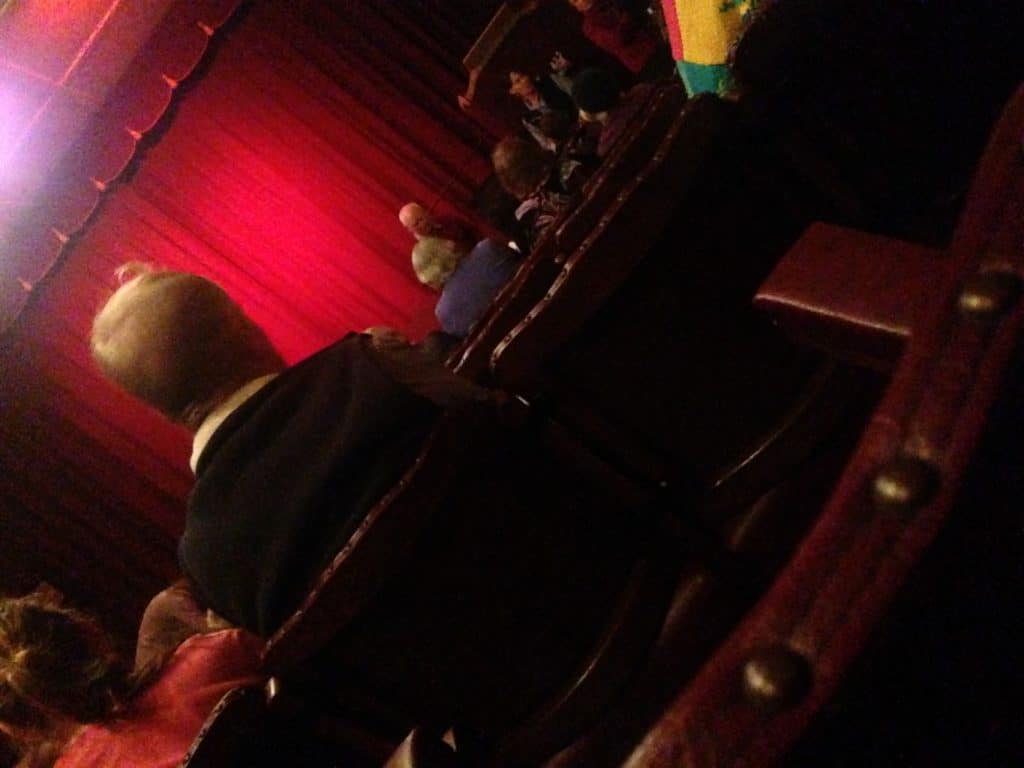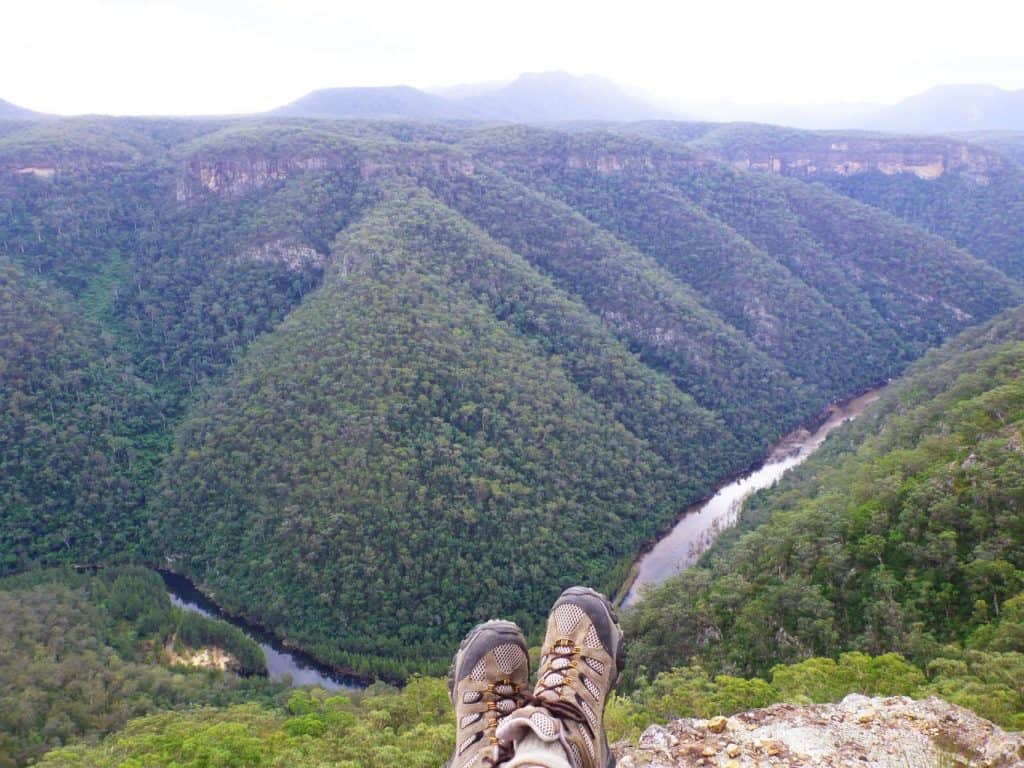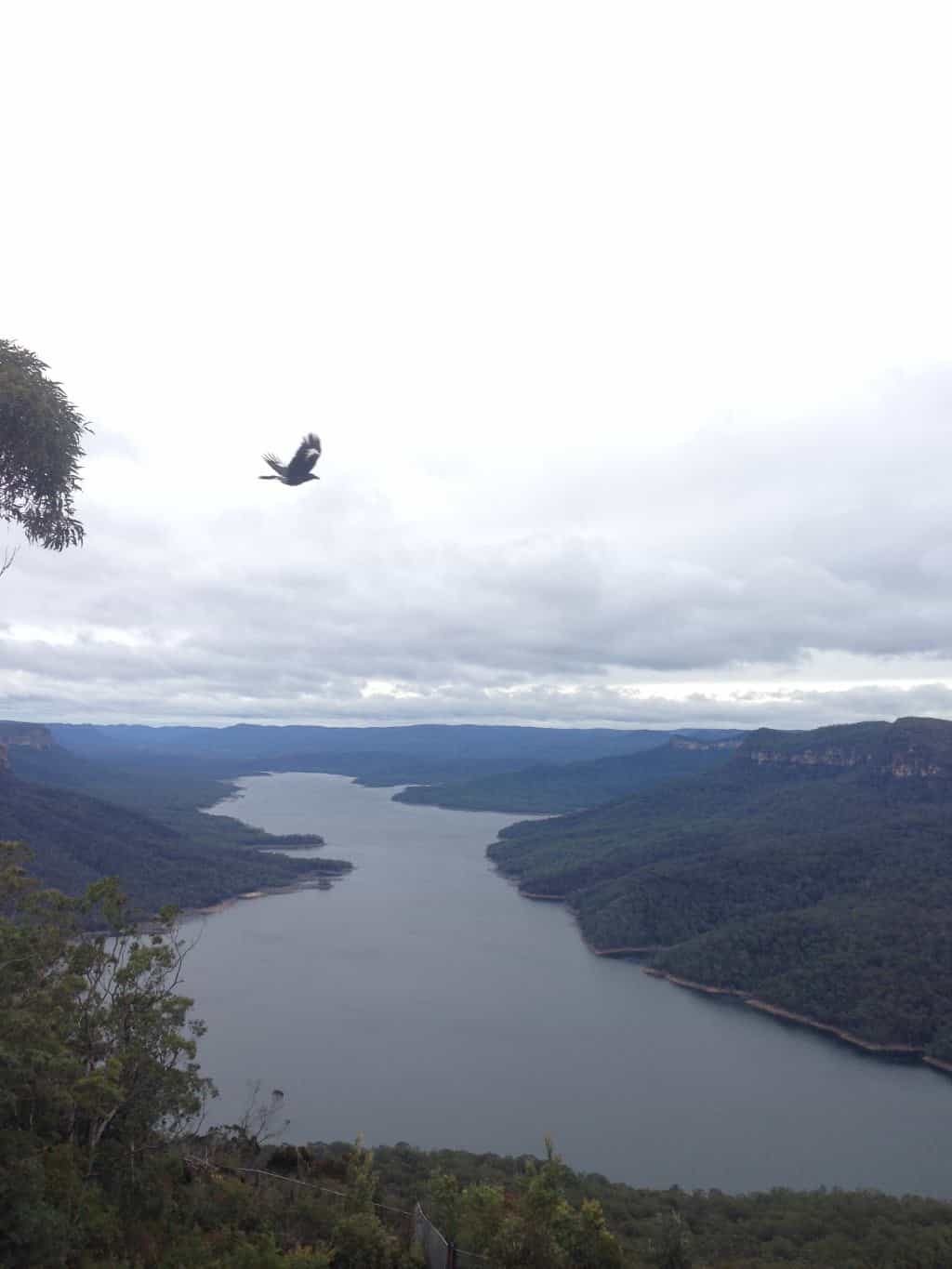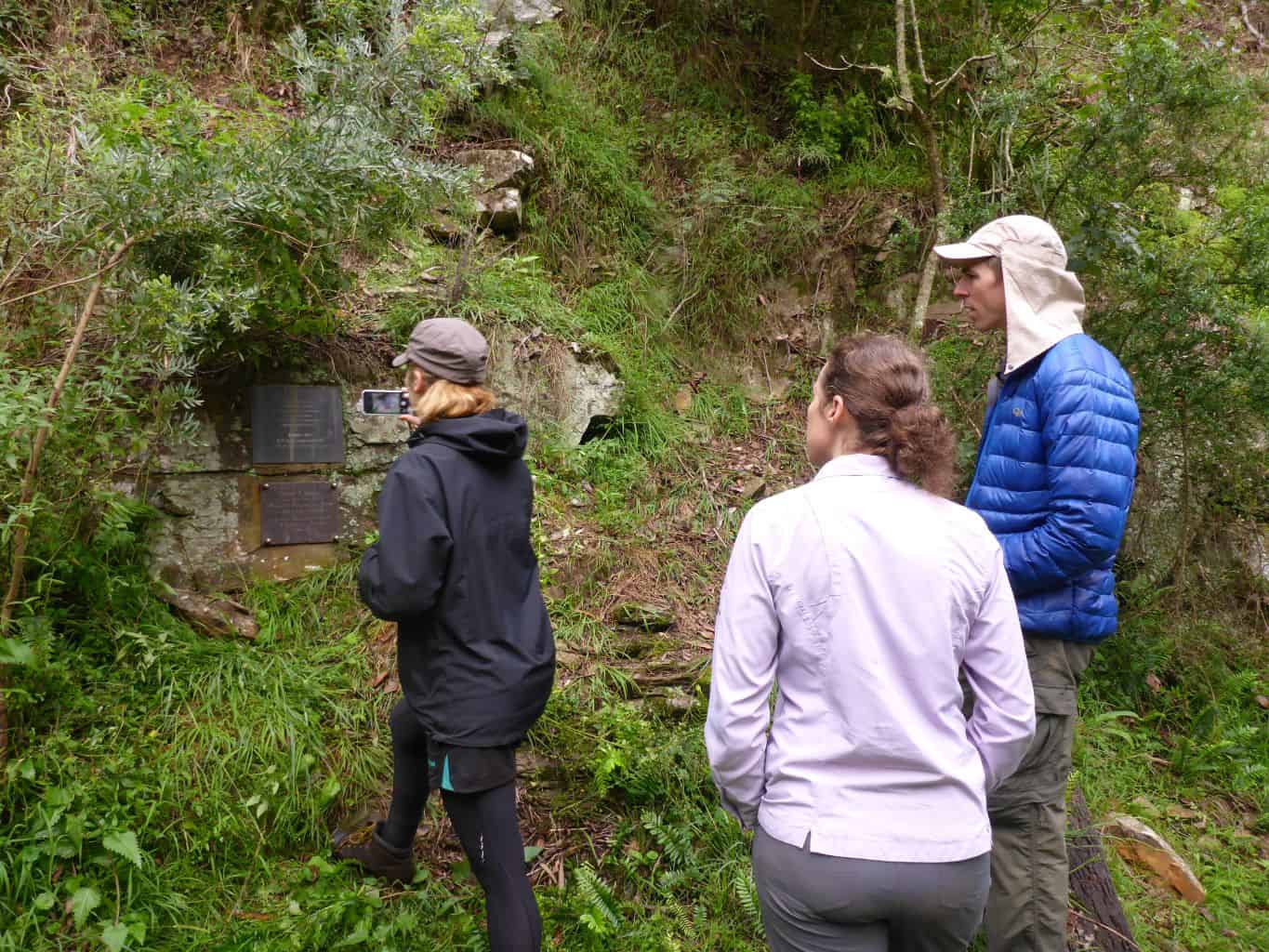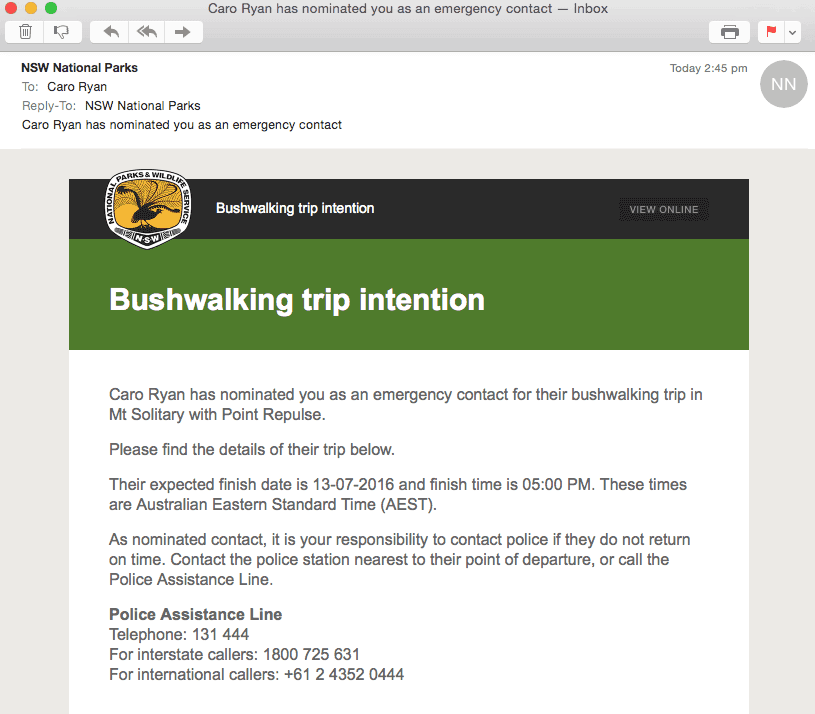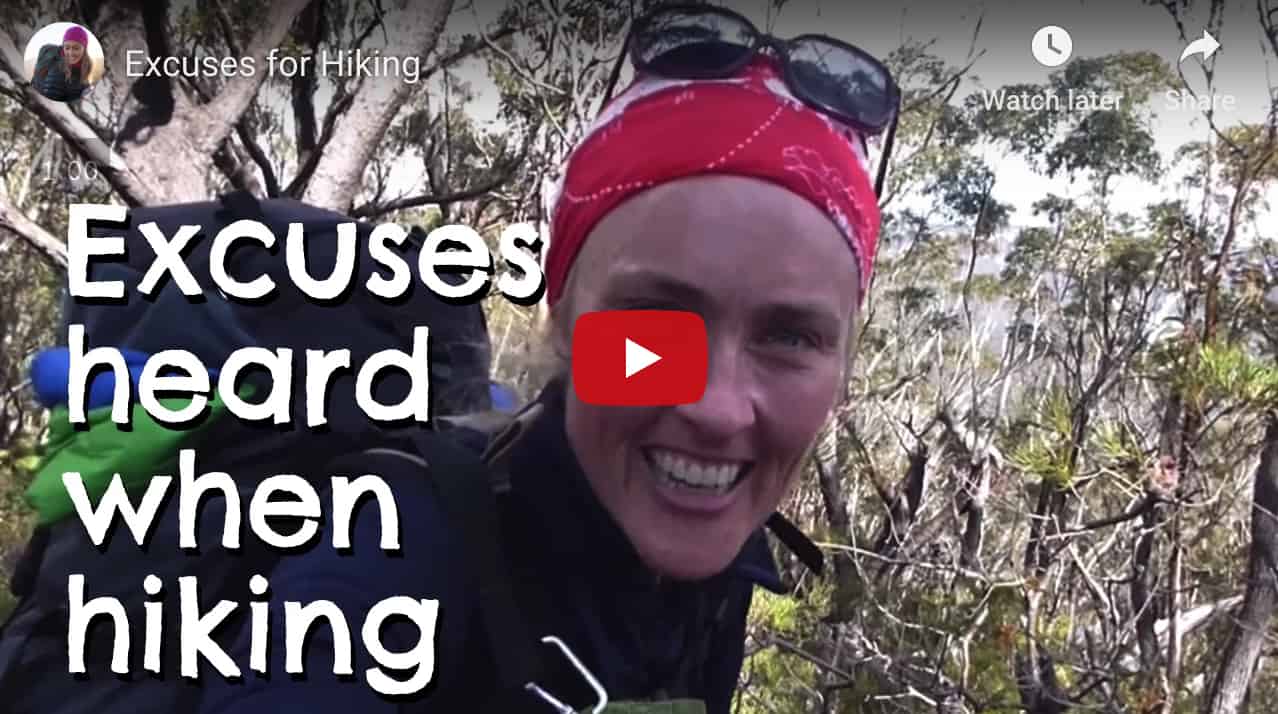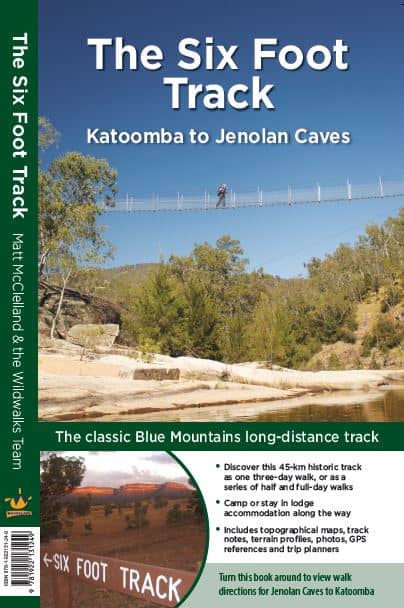Grab a cuppa guys, this one’s a bit of an essay…
It’s pretty rare that there’s a feature film, documentary or otherwise, that aims to get to the true heart of the wild places that many of us love. Therefore, it was with a certain sense of curiosity that I entered the gorgeous Mt Vic Flicks earlier this month for yet another sold out session to see The Man from Coxs River.
Mt Vic Flicks is one of those absolutely gorgeous old style community theatres that I can imagine my grandmother saving her pennies to see Fred twirl Ginger around the dancefloors of the 1930s.
With the classic red curtain and somewhat embarrassingly creaky seating (to match the floorboards) and home-made cakes from the in-theatre snackbar taking precedence over a homogenous choctop, the atmosphere was enough to set the scene. Although the film is showing in selected independent cinemas in eastern Australia, this showing was going to be a standout as it’s the local cinema to the film’s location and heroes. Looking around me, I wondered if there were friends, family or local gossips dropping in to see what all the fuss (over the last 5 years of production) had been about.
Putting aside my day job as a Producer, I was trying to see it through my bushwalker eyes only and to enjoy the story for what it was, enjoying the fact that this doco gives all of us the chance to look into what the late, great Wilf Hilder used to call Grand Country. He called it so, as the penalty for stepping foot into Schedule 1 Water Catchment Authority land is eleven grand!
Now, I’m not going to rant about issues around bushwalker access to wilderness areas. That’s just not my style. Sure, it’s a somewhat controversial issue and I know many walkers who scratch their head at not being able to walk through some of these places, for fear their wees and poos (buried 20cm down) and 100m from water, could pollute our precious H2O 50km away, but the fact is this movie actually does a good job at lifting back the covers and showing us punters just some of the complexity involved in managing our precious resources and the lands they lie within.
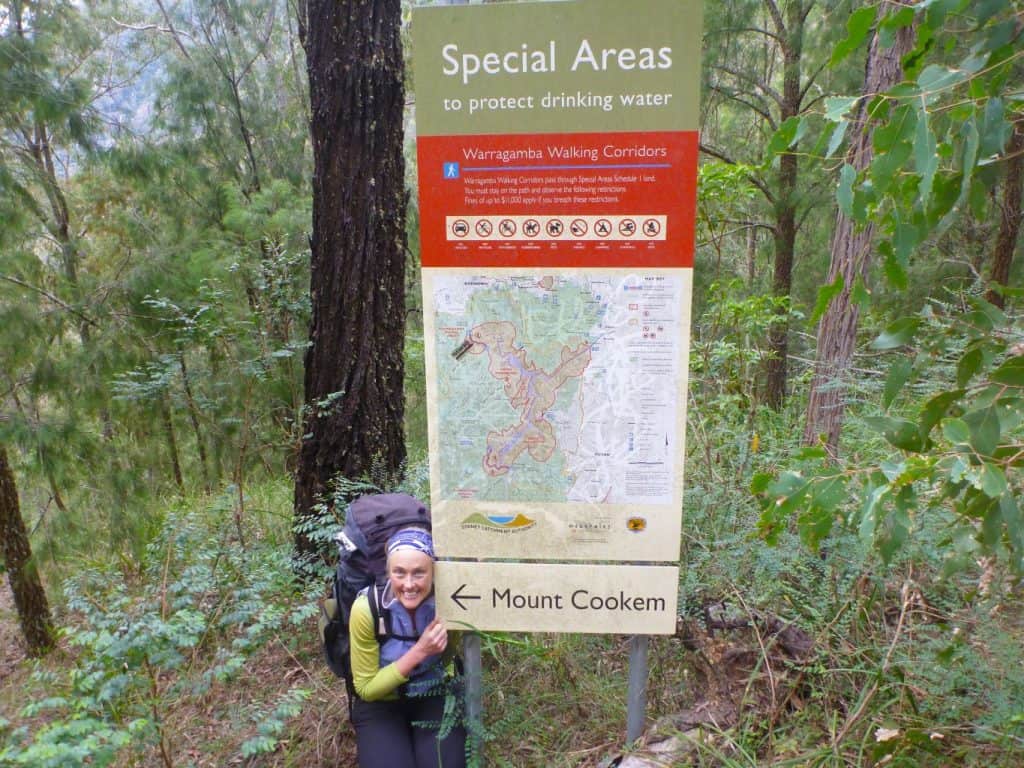
Over the last year or so, I’ve been working on a project in my day job that in corporate speak, we’d refer to as having “multiple-stakeholders”. It’s been an eye opening experience for me as sitting around my project table are a handful of government departments, all experts in their own field and all with their own charter to uphold. Each opinion and agenda is valid and important. The challenge comes when any of these are in conflict.
This, to me, is the core theme of this movie. It’s not, as the trailer and PR would have us believe, a simple conflict and relationship between a horseman and a park ranger – it’s the incredibly complex and difficult task that National Parks have in being the managers for pieces of land where there are multi-stakeholders.
There’s one scene in the movie, around a boardroom table, where we get a fleeting glimpse at a sliver of this complexity. As an audience, we don’t know who some of the clearly passionate voices are, but what comes across is lots of very strong opinions and seemingly few of the non-government voices understanding the need for all sides to compromise, take a risk, test something new or find a new way.
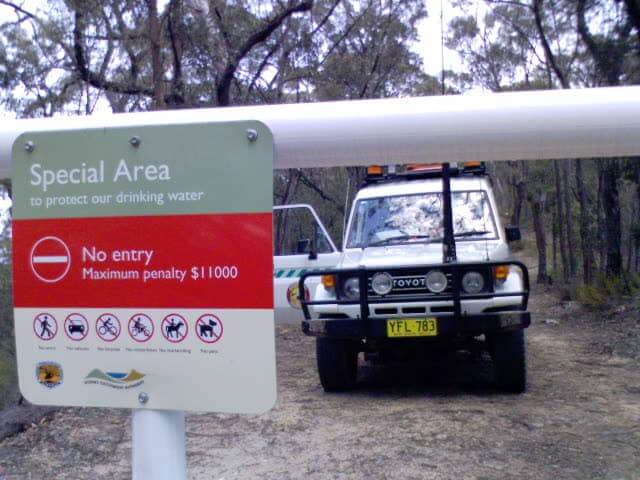
My personal history with the area of the Coxs River is a diverse one. Anyone who reads my blog regularly, knows that my Bushwalking spiritual home is the Wild Dog Mountains. An area of the Blue Mountains National Park that flows into the no-go water catchment area of the Coxs River. With names like Blue Dog Ridge and Buttress, Howling Dog, White Dog, Brown Dog and Spotted Dog; these are ridges that for thousands of years the Aboriginal Gundungara people have used as pathways to the Coxs and beyond. Today, Bushwalkers follow in their wise shadows seeking access to the (ironically) undrinkable flows that nestle beside isolated, sandy beach camps, rich in trout and stinging nettles.
My first experience of the Coxs River was long before I was a bushwalker. In fact, I was there to ride horses.
It was 1994 and two colleagues and I decided that a day in the mountains enjoying nature, riding horses through wild country was just the remedy for a stressful office environment. I was 22 (yep, work it out) and had little experience of the real Aussie bush. I have incredibly warm memories of that day, hazy as they are. Penny, an artist now living in Tasmania, a gutsy horsewoman with a bold style and fearless approach to our four legged friends and Helen, “Hele” to her friends, sadly, now lost to us through her own gutsy and fearless ride of cancer.
I’ve been racking my brain and toppo maps to try and figure out exactly which teeth shattering, butt jarring, ridge those *natty mountain ponies took us down. Was it Pots & Pans Ridge or Hoddles Spur? Who knows. The three of us were led by a young man (was it Luke Carlon?) up the dirt road towards Tin Pot Mountain and then down, down, down to Coxs River. There was a rough foot track, but those amazing Packsaddler’s horses did well to keep us upright down smooth tree roots, loose rocks and steep terrain.
They (and us) were rewarded with arriving at the Coxs River onto broad, sandy banks and stretched it out with a canter through the shallows. Like a slo-mo scene from a cheesy American movie of the week, we let our horses have their way and shake off the taut constraints of their steep descent.
The scene that opened before me was one that I never dreamed existed in Australia, let alone so (relatively) close to home. Yawning heights, with their dirty Aussie bush green velvet slopes and what looked like pine trees that would have been more at home in The American Rockies than in Australia. In fact, it was the first time I’d seen She Oaks, Casuarinas. And in that same way your brain tries to associate the new with something old, this was the closest I could come to comprehending these lovely whistling fingers. Now, the sound of the wind in their pine needley fingers is a rich lullaby that regularly lulls me to sleep.
Once at the river, our guide set about cooking each of us the worlds biggest T-bone steak (I kid you not) over an open fire. Just when I thought life couldn’t possibly get any better, it was followed with a slice of Mrs Carlon’s famous fruit cake and a strong, smokey cup of billy tea. Throughout this whole experience my mind was struggling to take it all in. How can a place such as this exist? How is it that I am blessed to see and be amongst it? Why have I never seen this before? Little did I know that it would be many years before I would experience it again, this time on foot, and learn that I could not only feel the temporary delights of it as a day tripping horserider, but could actually be a part of it and feel the Coxs River run through my veins.
I know that there are some bushwalkers, some of them my friends, who are quite against commercial activities within National Parks, especially horseriding. This post isn’t about that. In a way though, this movie brought to light a hidden truth about the conflicts between environmental voices and what on the surface could be seen as a purely commercial operation (Packsaddlers), but was actually about a family’s roots and strong ties to their land, heritage and way of life. I couldn’t help but also consider the great Aboriginal struggle against Australia’s colonial past, as well as it’s current politics.
Having fallen in love with the Coxs River that first time riding and seeing just a taste of the Carlon’s deep and unexplainable connection to the place and then coming back nearly ten years later in the mantle of a bushwalker, passing through the now familiar Carlon gates on the Megalong Road, I started my real education about what this country was all about.
It’s still something I will never tire of (although the road bash from Medlow Gap to Carlons carpark does test me sometimes!) and there is no way that I will ever know all there is to learn about this country. This new education and way of thinking, like a bushwalker, caused me to become ceaselessly fascinated with the stories of this country. Some of my most treasured possessions are 3 books by Bernard O’Reilly (Green Mountains – which tells of the staunch O’Reilly Kanimbla Valley family and their journey north to start O’Reillys Guesthouse and Bernard’s subsequent adventures in the search for the Stinson plane crash, which incidentally Charles Chauvel’s 1949 film, Sons of Mathew which features in TMFCR is based), Cullenbenbong and Over the Hills. It was in these books that I first read about the mysterious Gubba Gubba.
It was only a matter of time before I learnt about another character of these wild places in the form of Myles Dunphy. Like most people, my first encounter with the Dunphy name was by being wooed by the magic of the Dunphy Maps. With my fierce imagination of adventure stories from childhood, it was hard to believe that what looked like maps from Narnia or Mordor, actually existed – especially with names like Den of the Mist Monster and Temple of the Shining Orb – and that they were drawn by man, not by hobbit or fawn.
I set about getting my hands on all the easily accessible Dunphy Maps that I could – Gangerang and Kowmung being the main ones – and spent many nights (red wine, the willing apprentice at my side) pouring over the intricate hand-drawn scores, that played a rich symphony of wild places and adventures. I also headed to my local library to read all I could about this enigmatic person, as well as enjoying seeing the infamous ‘Kanangra Express’ pram and Dextre’s boots (as in Dex Creek) at the National Museum of Australia. Through this research, I learnt that there was more to the man than met the eye. With some very human failings (hypochondria anyone?), and some details about how these beautiful maps were created, it helped build a more realistic picture of the man.
So, now, cutting back to the film where the major conflict is being played out as being between Luke Carlon and Chris, the committed Park Ranger; as the advertising blurb says, “Can a mission to save a mob of brumbies in an inaccessible wilderness bring a fiercely independent horseman and Feral Control National Parks Ranger to see the world through each other’s eyes,” my attention was distracted by something that shot by quickly like a bullet from a helicopter. The revelation being, that it was the work of Myles Dunphy that led to the Carlon family losing what was essentially everything they held dear about their lives in the Megalong Valley.
Suddenly, the conflict wasn’t on the screen anymore. It was in me.
Suddenly, the irony of the fairly recent renaming of the campground/carpark at the end of the Megalong Road, “Dunphy Campground”, instead of it’s longstanding bushwalker’s name of simply “Carlons” – struck me. I’m only imagining that that change of name must have come as yet another significant blow to the Carlon family.
Because of this revelation, the film made a greater impression on me than I expected it to, albeit in a completely unexpected way and perhaps in a way that the Producers didn’t expect.
Certainly, my subsequent visit to the Carlon memorial plaque during my recent 3 Peaks (the lazy way) trip as portrayed in the movie was certainly more moving than any of my party expected. One of my Sydney Bushwalkers Club friends (who has also seen the movie) was moved to tears.
To put my Producer hat back on again, I could get all George Lucas/Joseph Campbell on you and say that in most films there are clear heroes and villains, both going on a journey together. The heroes in this film are clear – they are the Horseman and The Ranger, not to mention the unseen Parks employee who (thankfully) green-lighted the filming in the first place.
The villains however, are harder to pinpoint. First and most obviously, the villain of beaurocracy. Be it paperwork, legislation or precedence; policy, procedure or complacency. But I believe that there is another villain in there as well and that is people’s inability and unwillingness to see another person’s point of view or opinion.
In The Man from Coxs River, the heroes fought the villain(s) and they won.
I don’t know what the Producer’s motivation for making this doco was. Was it simply to tell a good story about a horseman and a ranger? Or did they want people to start thinking about the deeper issues involved, be it environmental, historical and to look within? Whether they planned it or not, I’ve been thinking about the ‘other’ issues a lot.
*with apologies to Banjo Patterson.


